25 Interesting Facts About Polar Bears

Introduction
Polar bears are one of the most iconic animals of the Arctic. These massive white bears have long captured the human imagination with their power, adaptability, and grace. As the largest land carnivores in the world, polar bears sit atop the Arctic food chain and play an essential role in the marine ecosystem.
Over millennia, polar bears have evolved a remarkable set of adaptations to thrive in the frigid Arctic climate. Their transparent, hollow fur provides insulation and camouflage. Layers of fat and a specialized circulatory system in their paws conserve heat. Keen senses of smell help them efficiently hunt seals on the ice. Even their liver has adapted to process high levels of vitamin A that would be toxic to other animals.
But now polar bears face an uncertain future due to climate change. Loss of sea ice habitat threatens their ability to hunt, roam, and survive. Understanding more about polar bear biology and behavior provides insights into how we can protect these iconic animals.
Interesting Facts About Polar Bears

1. Polar Bear Fur Isn’t Actually White
While polar bears appear white, their fur is actually transparent and hollow. Each hair reflects visible light which gives the fur its white appearance. Their black skin absorbs heat from the sun to keep warm. The transparent fur provides camouflage when hunting on the ice.
2. Polar Bears Have a Powerful Sense of Smell
Polar bears have an extremely acute sense of smell thanks to their large nose. They can detect seals, their main prey, from over a mile away. Their sense of smell is so strong they can detect seals under 3 feet of ice and snow. This powerful nose helps polar bears efficiently locate food in the harsh Arctic.
3. They are Excellent Swimmers
Polar bears are capable of swimming long distances and have been spotted swimming continuously for over 9 days. Their large front paws act like paddles and hind legs like rudders to propel them through the water. The longest recorded polar bear swim was over 434 miles.
| Swimming Ability | Description |
| Front paws | Act as paddles to propel |
| Hind legs | Act as rudders to steer |
| Longest swim | 434 miles over 9 days |
4. Cubs Stay With Their Mothers for 2.5 Years
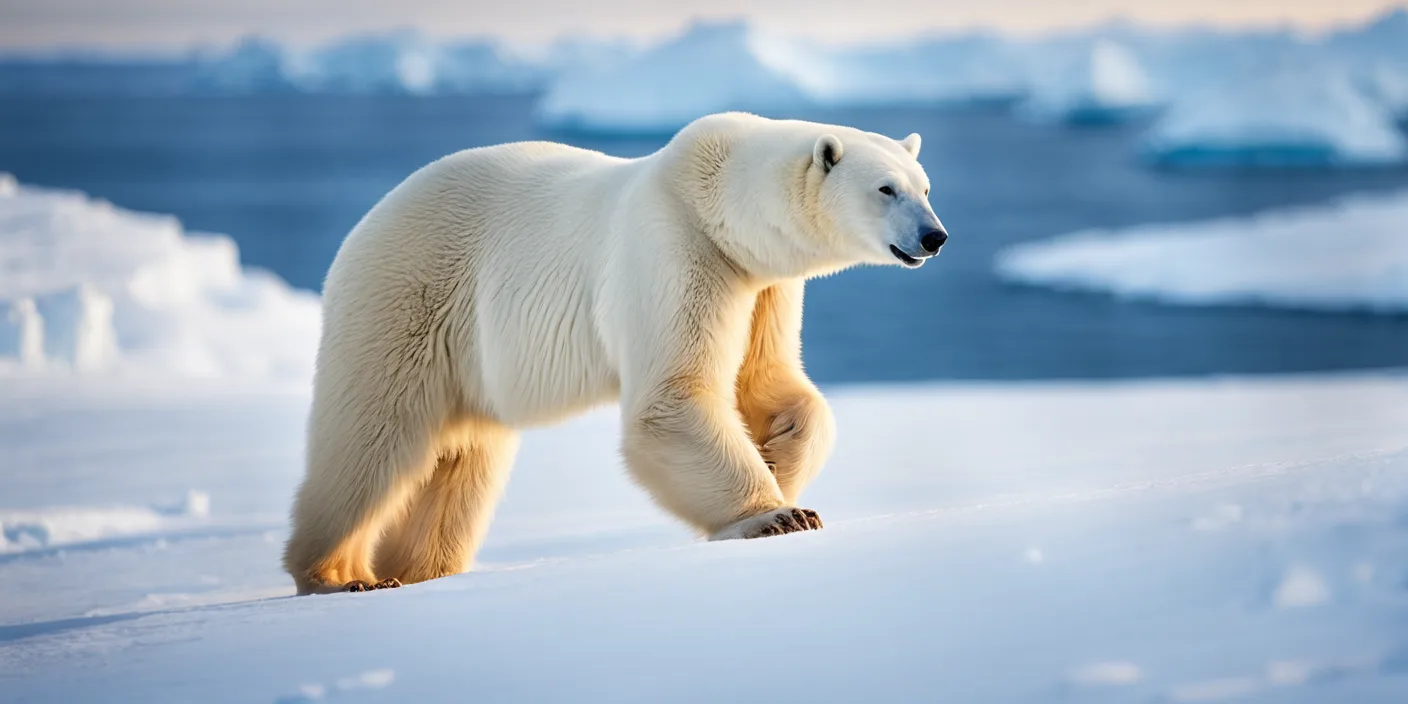
Polar bear cubs are born blind and tiny, weighing just over 1 pound. They remain with their mothers for 2.5 years learning to hunt and survive in the harsh climate. Female polar bears can have 1-4 cubs that they fiercely protect and teach essential skills like swimming and hunting.
5. Climate Change Threatens Polar Bears
Polar bears rely on Arctic sea ice for hunting, breeding, and traveling. As climate change causes sea ice to melt earlier and form later in the year, it threatens polar bears’ access to food. Scientists estimate the polar bear population could decline by 30% in the coming decades due to declining sea ice.
6. Polar Bear Fur Lacks UV Protection
A polar bear’s hollow, transparent fur provides camouflage but lacks protection from the sun’s UV rays. Their black skin can easily burn if exposed. To avoid sunburn, polar bears seek shade when the sun is high in the summer. Their fur lacks melanin which would provide UV protection.
7. Polar Bears Can Fast for Months
During times when seals are scarce, polar bears rely on their fat stores to survive. They are able to fast for months at a time, even through late summer/early fall when food is limited. Pregnant females can fast for 8 months while denning and giving birth.
8. Polar Bear Population Faces Decline
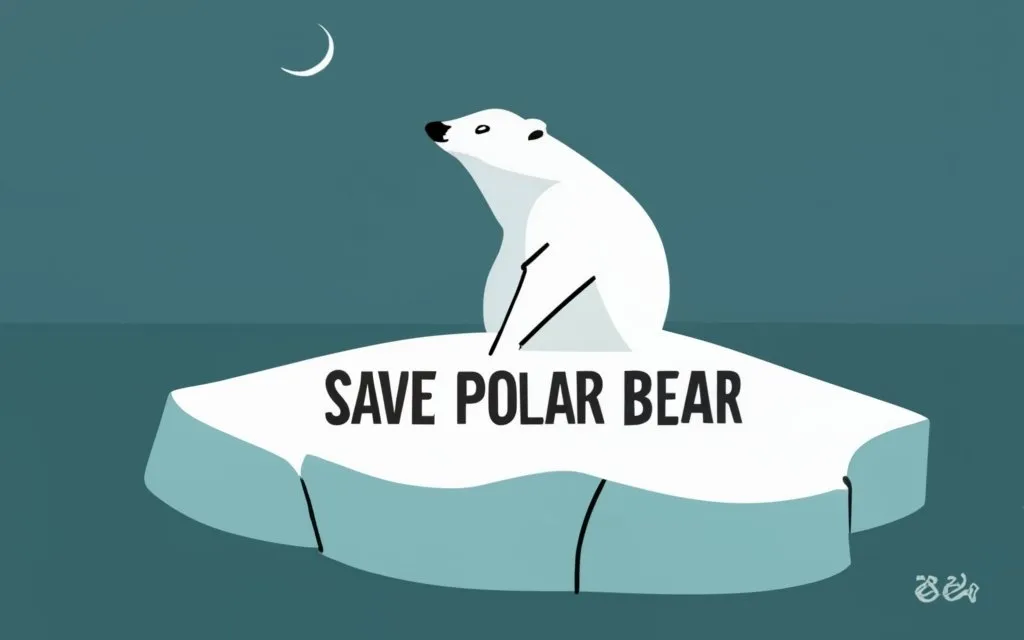
Scientists estimate the total polar bear population is 22,000-31,000 bears across 19 subpopulations. However, climate change impacts on sea ice have caused some subpopulations to decline significantly. Studies predict 30% of polar bears may disappear in coming decades if sea ice loss continues.
9. Inuit Revere Polar Bears Spiritually
Polar bears have been part of Inuit indigenous culture and folklore for thousands of years. Inuit legends portray polar bears as spiritual beings with human-like traits. Many taboos and rituals surround polar bear hunting due to their spiritual significance.
10. Polar Bears Have a Unique Heat Exchange System
A polar bear’s paws have a specialized circulatory system to prevent heat loss while walking on ice. Arteries and veins are in close contact and warm arterial blood heats up the cool venous blood before it returns to the body. This keeps their core warm.
11. Polar Bears Have a Powerful Bite
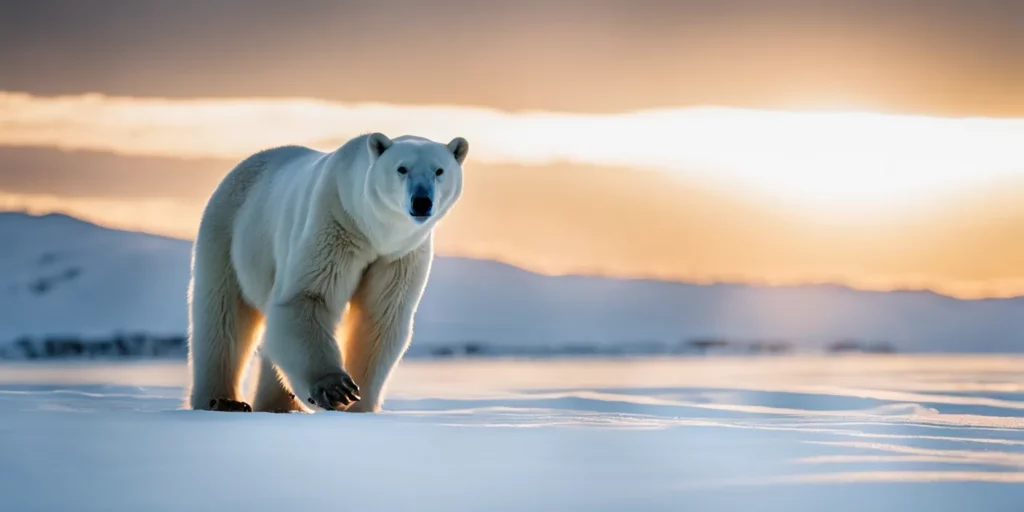
Polar bears have extremely powerful jaws that can deliver a bone-crushing bite. Their large, sharp canine teeth can be over 4 inches long and are used to seize and kill seals. Polar bears can easily crush a seal’s skull or other bones with their massive bite force.
12. They Cover Their Noses Before Diving
When polar bears submerge to hunt seals, they will often cover their noses with their paws. This is because the frigid Arctic water could freeze their nostrils shut if they didn’t protect them. Covering their noses prevents freezing and allows them to stay underwater longer.
13. Their Baculum is Very Long
Male polar bears have a baculum or penis bone that is longer than in any other bear species. The polar bear baculum averages around 10 inches long. Researchers think this extra-long baculum helps support their reproductive organs which can take a lot of strain during mating.
14. They Have Huge Paws
A polar bear’s paws can be up to 12 inches across. These huge paws distribute the bear’s weight and act like snowshoes so they don’t sink into the snow. Their rough paw pads also provide traction on the ice. The large surface area of their paws makes them excellent swimmers too.
15. Polar Bear Population Estimates
- Total polar bear population: 22,000 – 31,000 (link)
- 19 different subpopulations across the Arctic
- Predicted 30% decline in coming decades due to climate change
15. Polar Bears are Carnivores
Polar bears are carnivores and rely heavily on seals as their main prey. They will patiently stalk seals on the ice or wait motionless for hours by sealing breathing holes. Seals make up 90% of a polar bear’s diet. When seals are scarce, they may also hunt walruses, beluga whales, birds, and their eggs.
16. They Have Black Skin Under Their Fur
A polar bear’s skin is black which helps absorb heat from the sun. The black skin under their transparent, hollow fur helps them maintain their body temperature. Dark fur or skin helps animals keep warm in cold climates. Polar bears rely on stored fat reserves and their dark skin to maintain warmth.
17. Polar Bear Livers are Toxic
Polar bears have a super-efficient metabolism that allows them to process fat reserves for energy. But their livers contain extremely high levels of vitamin A that can be poisonous to humans. Eating polar bear liver can lead to hypervitaminosis A and even death.
18. They Spend Most of Their Lives on Sea Ice
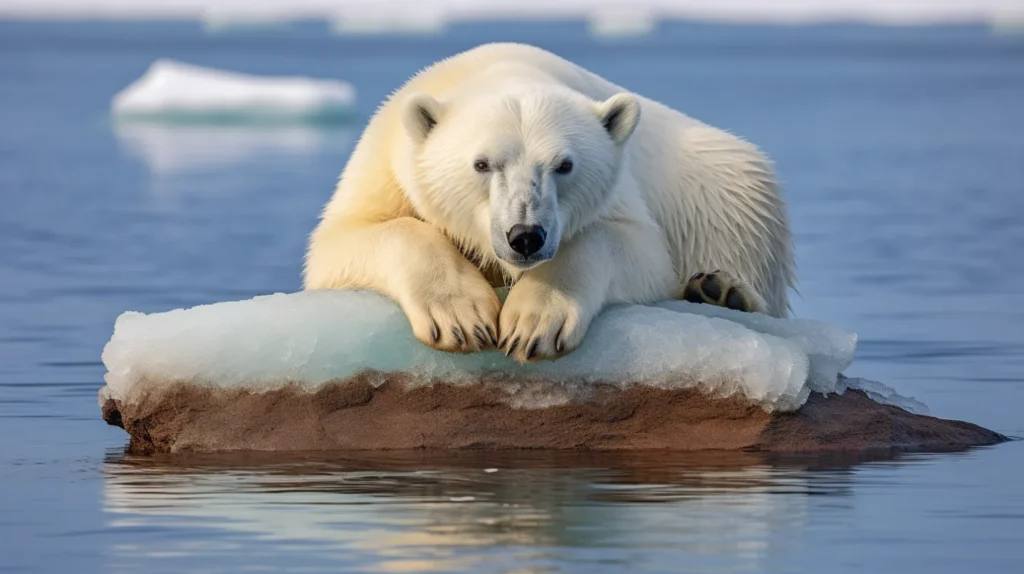
Polar bears rely on sea ice for hunting, migrating, and resting. They are considered marine mammals as they spend most of their lives on Arctic sea ice rather than land. Declining sea ice due to climate change severely threatens their ability to hunt and feed.
19. Polar Bears are Stealth Hunters
Polar bears use their white fur as camouflage to sneak up on seals. They will stealthily crawl across the ice without making a sound before pouncing. Their huge paws distribute weight and allow them to tread lightly. Surprise ambush attacks help them successfully hunt seals.
20. They Have Built-in Snow Goggles
A polar bear’s eyes have built-in “snow goggles” that protect them from snow blindness. Their eyes have adapted to filter out UV rays with amber pigment and narrow pupils. These adaptations prevent damage from the sun’s glare on snow and ice.
21. Pregnant Females Undergo “Walking Hibernation”
When pregnant, female polar bears conserve energy by entering walking hibernation. Their metabolism slows, heart rate drops and they don’t eat or drink. This walking hibernation allows them to fast for 8 months while pregnant and preserve fat reserves.
22. Cubs Are Born Helpless
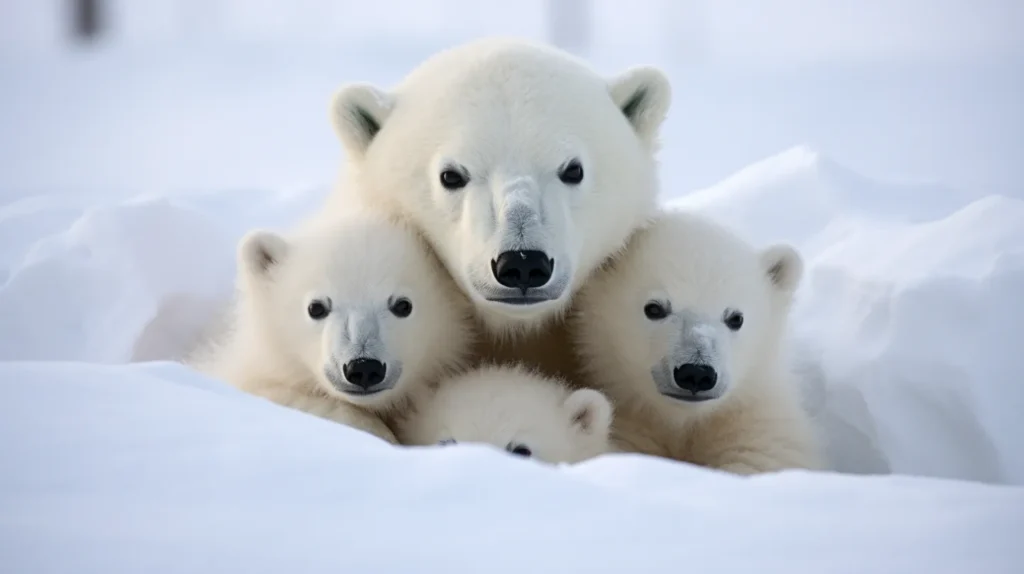
Newborn polar bear cubs weigh just over 1 pound. They are deaf, blind, and completely dependent on their mothers for food and warmth. Cubs nurse on rich, fatty milk and stay with their mothers for 2.5 years learning to hunt and survive in the Arctic.
23. Polar Bears Have Built-in Anti-Freeze
Polar bears have blood and cell membranes with extra cholesterol that acts as built-in antifreeze. This prevents their cells from freezing and bursting in frigid Arctic temperatures. Their blood remains fluid down to -15°C.
24. They Are Vulnerable to Extinction
The IUCN Red List classifies polar bears as vulnerable to extinction. Their sea ice habitats are declining due to climate change. Scientists estimate 2/3 of polar bears could disappear by 2050 if Arctic warming continues unabated.
25. Indigenous Hunting is Sustainable
For thousands of years, indigenous Inuit and other Arctic people have hunted polar bears sustainably for subsistence. Strict quotas ensure harvesting does not impact populations. Inuit revere polar bears spiritually and use the entire animal.

In summary, polar bears are perfectly adapted to the extreme Arctic cold but face grave threats from climate change and sea ice loss. Conservation efforts are crucial for preventing this iconic Arctic predator from disappearing.
Conclusion
In summary, polar bears are perfectly designed for Arctic life with unique adaptations like fur for insulation, fat for warmth, keen smell, and stealth hunting abilities. But they now face grave threats to their survival as climate change melts the sea ice they depend on.
Conservation efforts to reduce carbon emissions and protect polar bear habitat are crucial. Their uncertain future is a warning sign of the cascading effects climate change may have on the delicate Arctic ecosystem. Polar bears represent the strength, resilience, and beauty of the Arctic – losing them would be a tragedy. But by taking action to combat climate change, we can ensure polar bears continue thriving as the great Arctic predators they have evolved to be.





